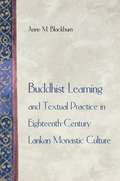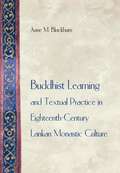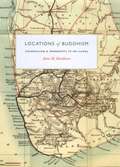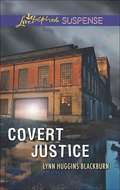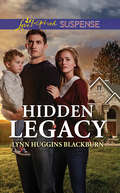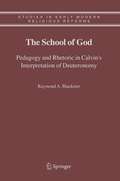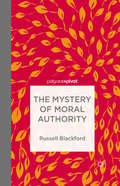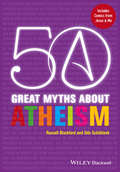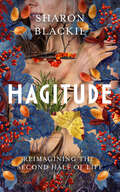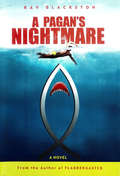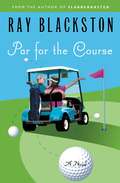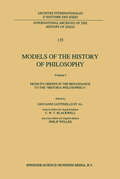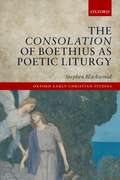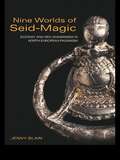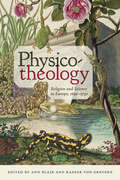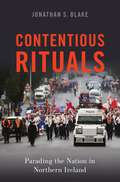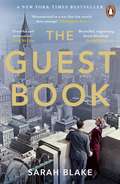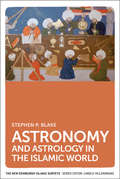- Table View
- List View
Buddhist Learning and Textual Practice in Eighteenth-Century Lankan Monastic Culture (Buddhisms: A Princeton University Press Series #12)
by Anne M. BlackburnAnne Blackburn explores the emergence of a predominant Buddhist monastic culture in eighteenth-century Sri Lanka, while asking larger questions about the place of monasticism and education in the creation of religious and national traditions. Her historical analysis of the Siyam Nikaya, a monastic order responsible for innovations in Buddhist learning, challenges the conventional view that a stable and monolithic Buddhism existed in South and Southeast Asia prior to the advent of British colonialism in the nineteenth century. The rise of the Siyam Nikaya and the social reorganization that accompanied it offer important evidence of dynamic local traditions. Blackburn supports this view with fresh readings of Buddhist texts and their links to social life beyond the monastery. Comparing eighteenth-century Sri Lankan Buddhist monastic education to medieval Christian and other contexts, the author examines such issues as bilingual commentarial practice, the relationship between clerical and "popular" religious cultures, the place of preaching in the constitution of "textual communities," and the importance of public displays of learning to social prestige. Blackburn draws upon indigenous historical narratives, which she reads as rhetorical texts important to monastic politics and to the naturalization of particular attitudes toward kingship and monasticism. Moreover, she questions both conventional views on "traditional" Theravadin Buddhism and the "Buddhist modernism" / "Protestant Buddhism" said to characterize nineteenth-century Sri Lanka. This book provides not only a pioneering critique of post-Orientalist scholarship on South Asia, but also a resolution to the historiographic impasse created by post-Orientalist readings of South Asian history.
Buddhist Learning and Textual Practice in Eighteenth-Century Lankan Monastic Culture (PDF)
by Anne M. BlackburnAnne Blackburn explores the emergence of a predominant Buddhist monastic culture in eighteenth-century Sri Lanka, while asking larger questions about the place of monasticism and education in the creation of religious and national traditions. Her historical analysis of the Siyam Nikaya, a monastic order responsible for innovations in Buddhist learning, challenges the conventional view that a stable and monolithic Buddhism existed in South and Southeast Asia prior to the advent of British colonialism in the nineteenth century. The rise of the Siyam Nikaya and the social reorganization that accompanied it offer important evidence of dynamic local traditions. Blackburn supports this view with fresh readings of Buddhist texts and their links to social life beyond the monastery. Comparing eighteenth-century Sri Lankan Buddhist monastic education to medieval Christian and other contexts, the author examines such issues as bilingual commentarial practice, the relationship between clerical and "popular" religious cultures, the place of preaching in the constitution of "textual communities," and the importance of public displays of learning to social prestige. Blackburn draws upon indigenous historical narratives, which she reads as rhetorical texts important to monastic politics and to the naturalization of particular attitudes toward kingship and monasticism. Moreover, she questions both conventional views on "traditional" Theravadin Buddhism and the "Buddhist modernism" / "Protestant Buddhism" said to characterize nineteenth-century Sri Lanka. This book provides not only a pioneering critique of post-Orientalist scholarship on South Asia, but also a resolution to the historiographic impasse created by post-Orientalist readings of South Asian history.
Locations of Buddhism: Colonialism and Modernity in Sri Lanka (Buddhism and Modernity)
by Anne M. BlackburnModernizing and colonizing forces brought nineteenth-century Sri Lankan Buddhists both challenges and opportunities. How did Buddhists deal with social and economic change; new forms of political, religious, and educational discourse; and Christianity? And how did Sri Lankan Buddhists, collaborating with other Asian Buddhists, respond to colonial rule? To answer these questions, Anne M. Blackburn focuses on the life of leading monk and educator Hikkaduve Sumangala (1827–1911) to examine more broadly Buddhist life under foreign rule. In Locations of Buddhism, Blackburn reveals that during Sri Lanka’s crucial decades of deepening colonial control and modernization, there was a surprising stability in the central religious activities of Hikkaduve and the Buddhists among whom he worked. At the same time, they developed new institutions and forms of association, drawing on pre-colonial intellectual heritage as well as colonial-period technologies and discourse. Advocating a new way of studying the impact of colonialism on colonized societies, Blackburn is particularly attuned here to human experience, paying attention to the habits of thought and modes of affiliation that characterized individuals and smaller scale groups. Locations of Buddhism is a wholly original contribution to the study of Sri Lanka and the history of Buddhism more generally.
Locations of Buddhism: Colonialism and Modernity in Sri Lanka (Buddhism and Modernity)
by Anne M. BlackburnModernizing and colonizing forces brought nineteenth-century Sri Lankan Buddhists both challenges and opportunities. How did Buddhists deal with social and economic change; new forms of political, religious, and educational discourse; and Christianity? And how did Sri Lankan Buddhists, collaborating with other Asian Buddhists, respond to colonial rule? To answer these questions, Anne M. Blackburn focuses on the life of leading monk and educator Hikkaduve Sumangala (1827–1911) to examine more broadly Buddhist life under foreign rule. In Locations of Buddhism, Blackburn reveals that during Sri Lanka’s crucial decades of deepening colonial control and modernization, there was a surprising stability in the central religious activities of Hikkaduve and the Buddhists among whom he worked. At the same time, they developed new institutions and forms of association, drawing on pre-colonial intellectual heritage as well as colonial-period technologies and discourse. Advocating a new way of studying the impact of colonialism on colonized societies, Blackburn is particularly attuned here to human experience, paying attention to the habits of thought and modes of affiliation that characterized individuals and smaller scale groups. Locations of Buddhism is a wholly original contribution to the study of Sri Lanka and the history of Buddhism more generally.
Locations of Buddhism: Colonialism and Modernity in Sri Lanka (Buddhism and Modernity)
by Anne M. BlackburnModernizing and colonizing forces brought nineteenth-century Sri Lankan Buddhists both challenges and opportunities. How did Buddhists deal with social and economic change; new forms of political, religious, and educational discourse; and Christianity? And how did Sri Lankan Buddhists, collaborating with other Asian Buddhists, respond to colonial rule? To answer these questions, Anne M. Blackburn focuses on the life of leading monk and educator Hikkaduve Sumangala (1827–1911) to examine more broadly Buddhist life under foreign rule. In Locations of Buddhism, Blackburn reveals that during Sri Lanka’s crucial decades of deepening colonial control and modernization, there was a surprising stability in the central religious activities of Hikkaduve and the Buddhists among whom he worked. At the same time, they developed new institutions and forms of association, drawing on pre-colonial intellectual heritage as well as colonial-period technologies and discourse. Advocating a new way of studying the impact of colonialism on colonized societies, Blackburn is particularly attuned here to human experience, paying attention to the habits of thought and modes of affiliation that characterized individuals and smaller scale groups. Locations of Buddhism is a wholly original contribution to the study of Sri Lanka and the history of Buddhism more generally.
Locations of Buddhism: Colonialism and Modernity in Sri Lanka (Buddhism and Modernity)
by Anne M. BlackburnModernizing and colonizing forces brought nineteenth-century Sri Lankan Buddhists both challenges and opportunities. How did Buddhists deal with social and economic change; new forms of political, religious, and educational discourse; and Christianity? And how did Sri Lankan Buddhists, collaborating with other Asian Buddhists, respond to colonial rule? To answer these questions, Anne M. Blackburn focuses on the life of leading monk and educator Hikkaduve Sumangala (1827–1911) to examine more broadly Buddhist life under foreign rule. In Locations of Buddhism, Blackburn reveals that during Sri Lanka’s crucial decades of deepening colonial control and modernization, there was a surprising stability in the central religious activities of Hikkaduve and the Buddhists among whom he worked. At the same time, they developed new institutions and forms of association, drawing on pre-colonial intellectual heritage as well as colonial-period technologies and discourse. Advocating a new way of studying the impact of colonialism on colonized societies, Blackburn is particularly attuned here to human experience, paying attention to the habits of thought and modes of affiliation that characterized individuals and smaller scale groups. Locations of Buddhism is a wholly original contribution to the study of Sri Lanka and the history of Buddhism more generally.
Covert Justice: Exit Strategy Payback Covert Justice (Mills And Boon Love Inspired Suspense Ser.)
by Lynn Huggins BlackburnAGENT UNDERCOVER
Hidden Legacy: Rocky Mountain Sabotage Hidden Legacy Deadly Memories (Mills And Boon Love Inspired Suspense Ser.)
by Lynn Huggins BlackburnTO SAVE HER CHILD
The School of God: Pedagogy and Rhetoric in Calvin's Interpretation of Deuteronomy (Studies in Early Modern Religious Tradition, Culture and Society #3)
by Raymond A. BlacketerCalvin’s Old Testament Exegesis in Context Calvin in Context Jean Calvin, the reformer and pastor of Geneva, is renowned as one of the most important figures in what came to be known as the Reformed and Presbyterian branch of the Protestant Reformation. Perhaps less well known is the fact that he devoted the bulk of his creative efforts to prea- ing, lecturing, and commenting on the Bible. Calvin envisioned a program of reform in Geneva in which the Bible, properly interpreted, would shape the minds and morals of the Genevan populace. The people of Geneva, whom Calvin viewed as a precise spiritual reincarnation of the “sti- necked, intractable Hebrews” of the Old Testament, were in need of some serious remedial education, and it was his duty as their chief minister to provide the requisite training in doctrine and godliness. Despite Calvin’s emphasis on preaching and producing biblical c- mentaries, however, scholars have often portrayed him as “a man of one 1 book”—that one book being the Institutes of the Christian Religion. In so - ing, they have produced a one-dimensional and consequently incomplete view of Calvin’s theological work. Scholars have tended to study Calvin’s theology exclusively from the perspective of his Institutes, without taking into account his work of biblical interpretation and preaching, or the re- tionship of those efforts to the Institutes.
The Mystery of Moral Authority
by Russell BlackfordThe Mystery of Moral Authority argues for a sceptical and pragmatic view of morality as an all-too-human institution. Searching, intellectually rigorous, and always fair to rival views, it represents the state of the art in a tradition of moral philosophy that includes Thomas Hobbes, David Hume, and J.L. Mackie.
50 Great Myths About Atheism
by Russell Blackford Udo SchüklenkTackling a host of myths and prejudices commonly leveled at atheism, this captivating volume bursts with sparkling, eloquent arguments on every page. The authors rebut claims that range from atheism being just another religion to the alleged atrocities committed in its name. An accessible yet scholarly commentary on hot-button issues in the debate over religious belief Teaches critical thinking skills through detailed, rational argument Objectively considers each myth on its merits Includes a history of atheism and its advocates, an appendix detailing atheist organizations, and an extensive bibliography Explains the differences between atheism and related concepts such as agnosticism and naturalism
50 Great Myths About Atheism
by Russell Blackford Udo SchüklenkTackling a host of myths and prejudices commonly leveled at atheism, this captivating volume bursts with sparkling, eloquent arguments on every page. The authors rebut claims that range from atheism being just another religion to the alleged atrocities committed in its name. An accessible yet scholarly commentary on hot-button issues in the debate over religious belief Teaches critical thinking skills through detailed, rational argument Objectively considers each myth on its merits Includes a history of atheism and its advocates, an appendix detailing atheist organizations, and an extensive bibliography Explains the differences between atheism and related concepts such as agnosticism and naturalism
Hagitude: Reimagining the Second Half of Life
by Sharon BlackieA radical rewriting of the future for all women approaching their mid and elder years.'There can be a perverse pleasure, as well as a sense of rightness and beauty, in insisting on flowering just when the world expects you to become quiet and diminish.' Sharon BlackieFor any woman over 50 who has ever asked 'What now? How do I wish to age?' comes a life-changing new book showing how your second half may be your most dynamic yet.Rich with the combination of myth, landscape and eco-feminism that took her earlier work If Women Rose Rooted to cult status, Hagitude reclaims the mid-years as a liberating, alchemical moment - from which to shift into your chosen, authentic and fulfilling future. Drawing inspiration from mythic figures and archetypes ranging from the wise woman and the creatrix to the henwife and the trickster, as well as modern mentors, Sharon Blackie plots a liberating new path into elderhood.Hagitude is a radical rewriting of the future for all women in their mid and elder years, its pages rich with possibility, the promise of adventure and influence, and an emphasis on a woman's value and impact in the second half of life.
Rock Your Ugly Christmas Sweater
by Anne Marie Blackman Brian Clark HowardBased off the popular website of the same name, Rock Your Ugly Christmas Sweater celebrates ugly Christmas sweaters year-round and showcases hilarious photos of people and pets wearing some of the ugliest holiday sweaters ever. More colorful than visions of sugarplums and jollier than a sleigh full of inebriated elves, ugly Christmas sweaters are a global holiday tradition celebrated by all ages and walks of life. With more than 200 photos, humorous captions, and chapters like Vintage Sweater Fun, Classic Sweaters from the '80s and '90s, Winter Wonderland, and Best of the Best, this book is here to help you spread the holiday cheer and maybe get some new ideas for this year's ugly Christmas sweater party -- horrid fringe, creepy elves, gaudy snowmen, and light-up reindeer are just the beginning!
A Pagan's Nightmare: A Novel
by Ray BlackstonRay Blackston presents a tongue-in-cheek look at contemporary culture as seen through the eyes of an unwary pagan screenwriter who writes a hit about the last unbeliever on Earth navigating in a thoroughly Christian world.
Par for the Course: A Novel
by Ray BlackstonSparks fly when Ray Blackson returns with his trademark quirky sense of humor. Golf, politics, and romance collide in PAR FOR THE COURSE as golf range owner Chris Hackett meets an attractive political correspondent who turns his world upside down.In PAR FOR THE COURSE, Chris Hackett owns and operates Hack's Golf Learning Center, an eccentric golf range in Charleston, SC. Chris jumps at the chance to step up his game when an attractive new student and political correspondent, Molly, suggests that Chris capitalize on the current, highly polarized, presidential election. This pitting of right versus left means even more income, plus a sharp new girlfriend, and soon Chris, his sidekick, Cack, and their unique golf range are the talk of the town . . . until someone takes the political insults too seriously. Will Molly stick around as Chris learns the true meaning of "playing politics"? And will Chris realize how much he wants her to?
Models of the History of Philosophy: From its Origins in the Renaissance to the ‘Historia Philosophica’ (International Archives of the History of Ideas Archives internationales d'histoire des idées #135)
by C. W. Blackwell Philip WellerModels of the History of Philosophy. From its Origins in the Renaissance to the `Historia philosophica' (a translation of a work published in 1981 in Italian - the bibliography has been updated) gives a comprehensive description of the various forms and approaches in the literature of the history of philosophy from the fifteenth to the middle of the seventeenth century. Several traditions are described, from the well known `prisca theologia' and `perennis philosophia' traditions of Marsilio Ficino and Augustino Steuco, which claimed that the Greeks got their philosophy from the East, to the unknown influence of Scepticism on the history of philosophy by the recovery of Sextus Empiricus, and the German Protestant critical attack on Greek philosophy as Atheistic which was the tradition of the history of philosophy out of which Leibniz developed. Each individual historian of philosophy is given a separate entry which includes a biography, a complete bibliography of his works, a description of his history of philosophy and ends with both an assessment of his reputation during his own time and a complete listing of recent literature on him. As a result the substantial variety in the way the history of philosophy was written and, with it, an overview of the way western civilization developed is described in detail for the first time. For university history of literature, history of culture, history of religion and history of philosophy classes. The book can be used both for undergraduate courses (for specific reading assignments) and as background material for graduate courses. The bibliography provides important aids to many topics which have previously been almost inaccessible.
The Consolation of Boethius as Poetic Liturgy (Oxford Early Christian Studies)
by Stephen BlackwoodThroughout Antiquity and the Middle Ages, literature was read with the ear as much as with the eye: silent reading was the exception; audible reading, the norm. This highly original book shows that Boethius's Consolation of Philosophy - one of the most widely-read texts in Western history-aims to affect the listener through the designs of its rhythmic sound. Stephen Blackwood argues that the Consolation's metres are arranged in patterns that have a therapeutic and liturgical purpose: as a bodily mediation of the text's consolation, these rhythmic patterns enable the listener to discern the eternal in the motion of time. The Consolation of Boethius as Poetic Liturgy vividly explores how in this acoustic encounter with the text philosophy becomes a lived reality, and reading a kind of prayer.
Nine Worlds of Seid-Magic: Ecstasy and Neo-Shamanism in North European Paganism
by Jenny BlainThis accessible study of Northern European shamanistic practice, or seidr, explores the way in which the ancient Norse belief systems evoked in the Icelandic Sagas and Eddas have been rediscovered and reinvented by groups in Europe and North America. The book examines the phenomenon of altered consciousness and the interactions of seid-workers or shamanic practitioners with their spirit worlds. Written by a follower of seidr, it investigates new communities involved in a postmodern quest for spiritual meaning.
Nine Worlds of Seid-Magic: Ecstasy and Neo-Shamanism in North European Paganism
by Jenny BlainThis accessible study of Northern European shamanistic practice, or seidr, explores the way in which the ancient Norse belief systems evoked in the Icelandic Sagas and Eddas have been rediscovered and reinvented by groups in Europe and North America. The book examines the phenomenon of altered consciousness and the interactions of seid-workers or shamanic practitioners with their spirit worlds. Written by a follower of seidr, it investigates new communities involved in a postmodern quest for spiritual meaning.
Physico-theology: Religion and Science in Europe, 1650–1750 (Medicine, Science, and Religion in Historical Context)
by Ann Blair Kaspar Von GreyerzBeginning around 1650, the emergence of a number of new scientific concepts, methods, and instruments challenged existing syntheses of science and religion. Physico-theology, which embraced the values of personal, empirical observation, was an international movement of the early Enlightenment that focused on the new science to make arguments about divine creation and providence. By reconciling the new science with Christianity across many denominations, physico-theology played a crucial role in diffusing new scientific ideas, assumptions, and interest in the study of nature to a broad public. In this book, sixteen leading scholars contribute a rich array of essays on the terms and scope of the movement, its scientific and religious arguments, and its aesthetic sensibilities.Contributors: Ann Blair, Simona Boscani Leoni, John Hedley Brooke, Nicolas Brucker, Katherine Calloway, Kathleen Crowther, Brendan Dooley, Peter Harrison, Barbara Hunfeld, Eric Jorink, Scott Mandelbrote, Brian W. Ogilvie, Martine Pécharman, Jonathan Sheehan, Anne-Charlott Trepp, Rienk Vermij, Kaspar von Greyerz
Contentious Rituals: Parading the Nation in Northern Ireland (Oxford Studies in Culture and Politics)
by Jonathan S. BlakeThroughout the world, divisive monuments, ceremonies, and processions assert and reinforce claims to territory, legitimacy, and dominance. These contested symbols and rituals strengthen and lend meaning to communal boundaries; confer and renew identities; and inflame tensions between groups, polarizing communities and, at times, triggering violence. In Contentious Rituals, Jonathan S. Blake focuses on one such controversial tradition: Protestant parades in the streets of Northern Ireland. Marchers say they are celebrating their culture and commemorating their history, as they have done for two centuries. Catholics see the parades as carnivals of bigotry and strident assertions of power. The result is heightened inter-communal friction and occasional violence. Drawing on over 80 interviews, an original survey, and ethnographic observations, Blake investigates why participants choose to march in parades that are known to be a primary source of sectarian conflict today. His analysis reveals their reasons for acting, the meanings supplied to them, and how they make sense of the contention that surrounds them. Ultimately, he discovers, many paraders are not interested in the politics of their actions at all, but rather in the allure of the action itself: the satisfactions of joining with others to express a collective identity and carry on a cherished tradition. An insightful exploration of the characteristics and dynamics of nationalism in action, Contentious Rituals offers an innovative approach to the contested politics of culture in divided societies and a new explanation for an old source of conflict in Northern Ireland.
Contentious Rituals: Parading the Nation in Northern Ireland (Oxford Studies in Culture and Politics)
by Jonathan S. BlakeThroughout the world, divisive monuments, ceremonies, and processions assert and reinforce claims to territory, legitimacy, and dominance. These contested symbols and rituals strengthen and lend meaning to communal boundaries; confer and renew identities; and inflame tensions between groups, polarizing communities and, at times, triggering violence. In Contentious Rituals, Jonathan S. Blake focuses on one such controversial tradition: Protestant parades in the streets of Northern Ireland. Marchers say they are celebrating their culture and commemorating their history, as they have done for two centuries. Catholics see the parades as carnivals of bigotry and strident assertions of power. The result is heightened inter-communal friction and occasional violence. Drawing on over 80 interviews, an original survey, and ethnographic observations, Blake investigates why participants choose to march in parades that are known to be a primary source of sectarian conflict today. His analysis reveals their reasons for acting, the meanings supplied to them, and how they make sense of the contention that surrounds them. Ultimately, he discovers, many paraders are not interested in the politics of their actions at all, but rather in the allure of the action itself: the satisfactions of joining with others to express a collective identity and carry on a cherished tradition. An insightful exploration of the characteristics and dynamics of nationalism in action, Contentious Rituals offers an innovative approach to the contested politics of culture in divided societies and a new explanation for an old source of conflict in Northern Ireland.
The Guest Book: A Novel
by Sarah BlakeA sweeping, heart-wrenching novel about three generations of a privileged American family, and the secrets that bind them, from the bestselling author of THE POSTMISTRESS - available for preo-rder now "An exploration of memory, identity, love, and family loyalty. Powerful and provocative" Paula McLain, bestselling author of The Paris Wife The Miltons are a powerful old New York family - the kind of family that used to run the world. And in 1935, they still do. Kitty and Ogden Milton seem to have it all: an elegant apartment on the Upper East Side, two beautiful little boys, a love everyone envies. When a tragedy befalls them, Ogden comforts Kitty the only way he knows how - they go sailing, picnic on a small island off the coast of Maine, and buy it. For generations the Miltons of Crockett Island revel in a place that is entirely their own. But it's 1959, and the world is changing: Ogden's firm hire a Jewish man, Len Levy, who earns the admiration of not only his boss, but his boss's beautiful young daughter. When Len and his friend visit the island, the Milton's principles and prejudices are challenged like never before. At the dawn of the 21st century, the family money has run dry, and the island is up for sale. Returning for one last visit, Kitty's granddaughter uncovers disturbing evidence about her family's wealth - and realizes she is on the verge of finally understanding the silences that seemed to hover just below the surface of her family all her life.'I was totally swept away by this beautiful, engrossing, ultimately heartbreaking family saga' Rachel Rhys, author of 'Dangerous Crossing' and 'Fatal Inheritance'
Astronomy and Astrology in the Islamic World (The New Edinburgh Islamic Surveys)
by Stephen P. BlakeIt was the astronomers and mathematicians of the Islamic world who provided the theories and concepts that paved the way from the geocentric theories of Claudius Ptolemy in the second century AD to the heliocentric breakthroughs of Nicholas Copernicus and Johannes Kepler in the sixteenth and seventeenth centuries. Algebra, the Arabic numeral system, and trigonometry: all these and more originated in the Muslim East and undergirded an increasingly accurate and sophisticated understanding of the movements of the Sun, Moon, and planets. This nontechnical overview of the Islamic advances in the heavenly sciences allows the general reader to appreciate (for the first time) the absolutely crucial role that Muslim scientists played in the overall development of astronomy and astrology in the Eurasian world.
